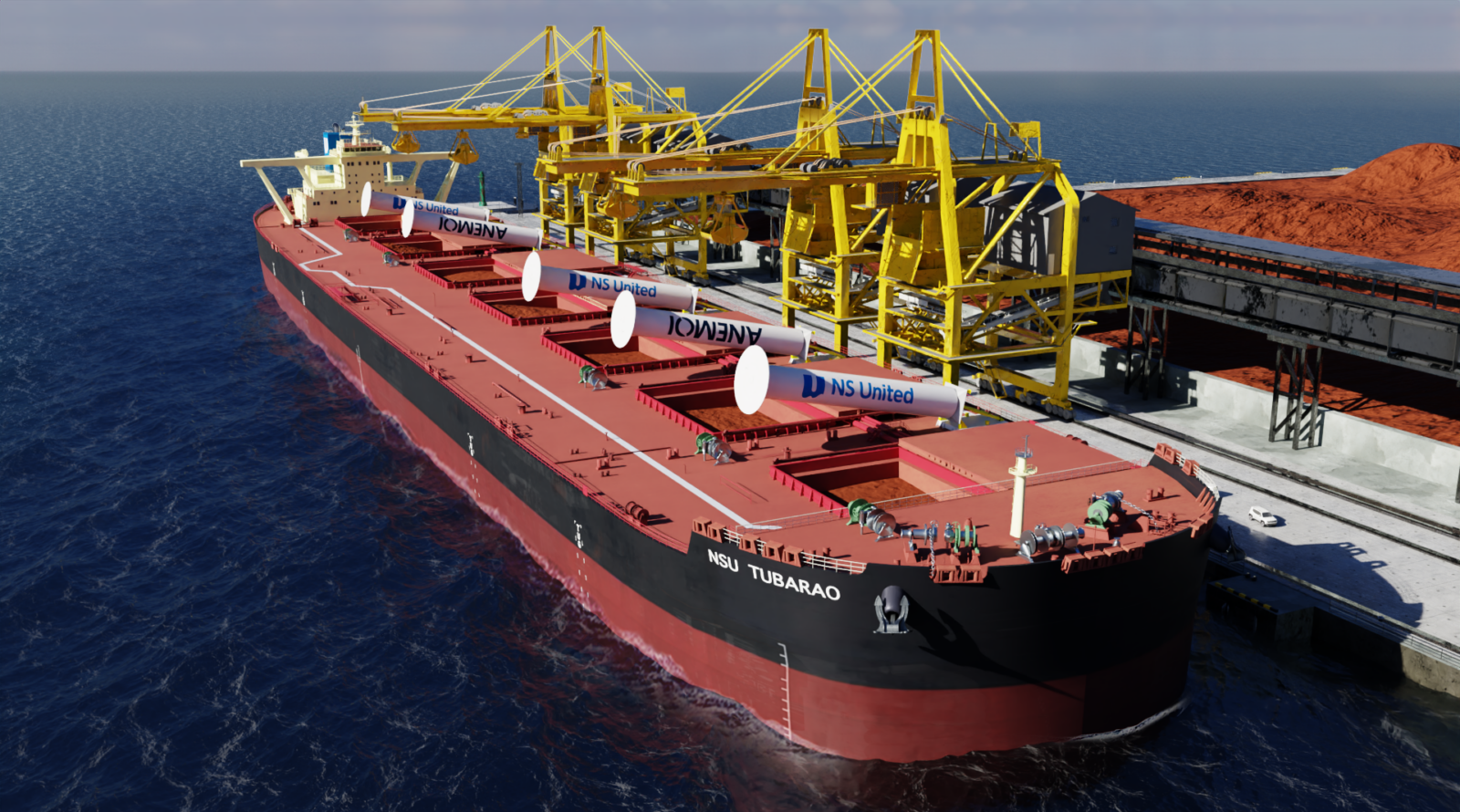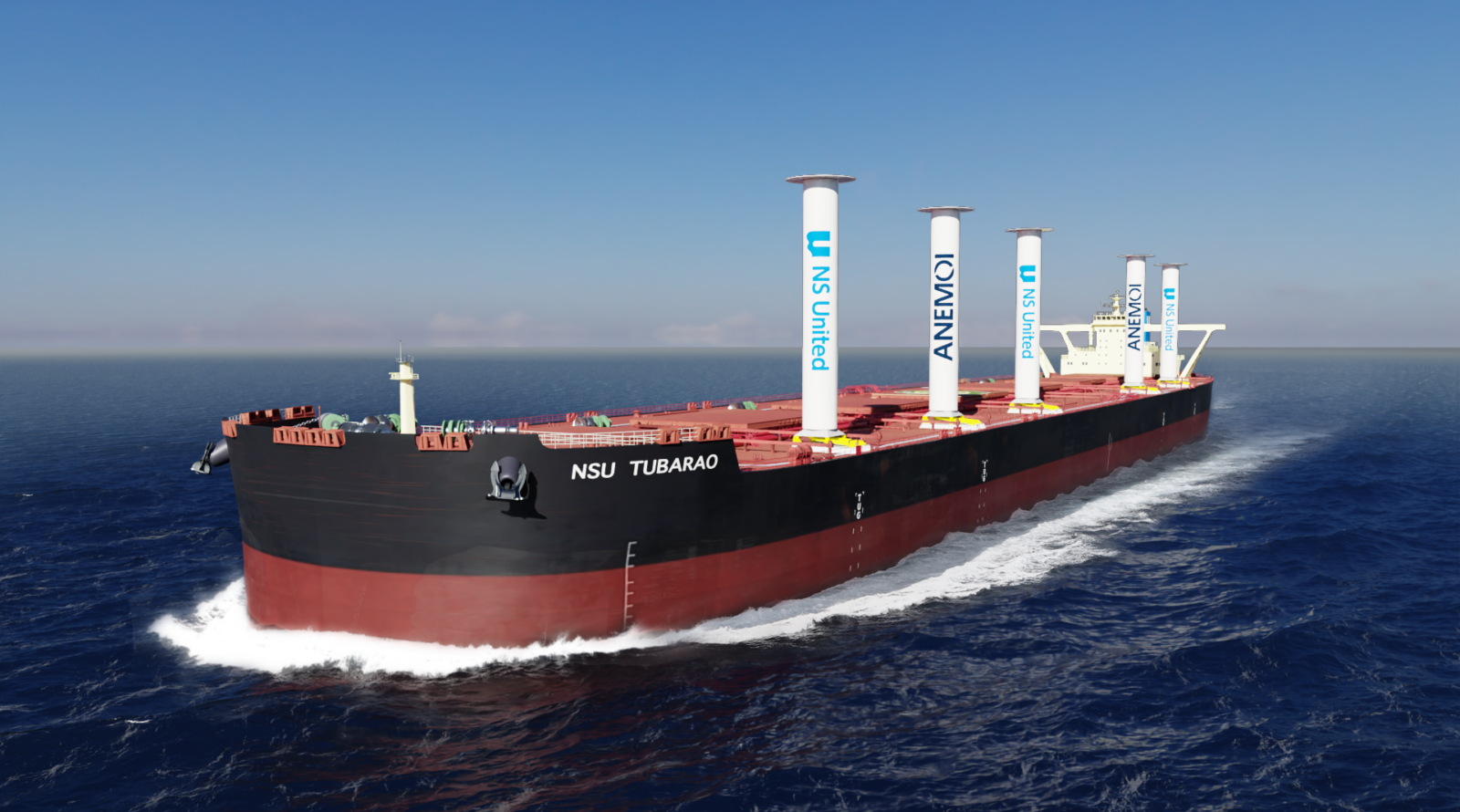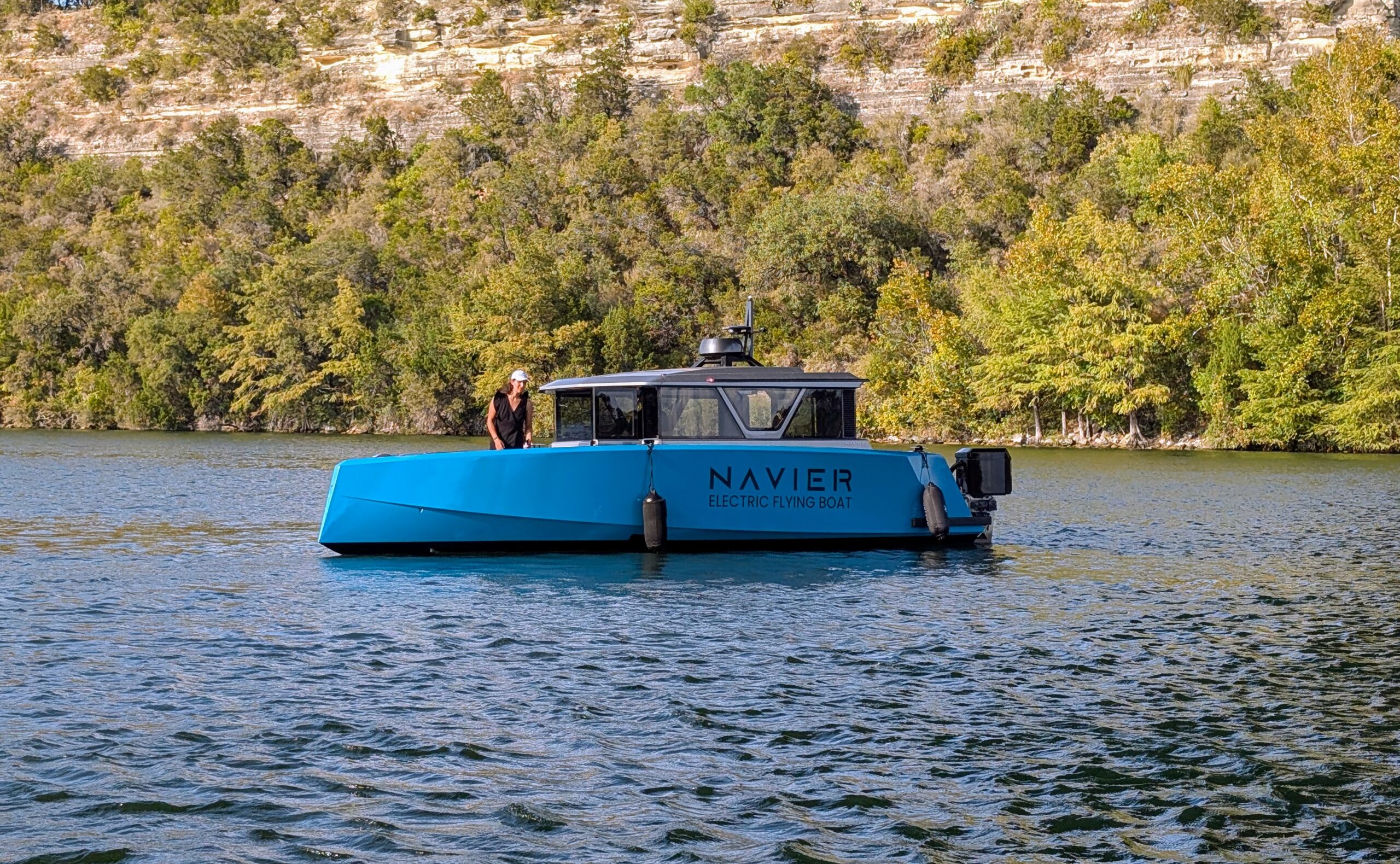Sign up for daily news updates from CleanTechnica on email. Or follow us on Google News!
Harnessing more wind dramatically enhances clean power and propulsion. On that topic, more maritime shipping businesses are noticing and embracing added efficient technologies. Seriously. A few are giving sails a contemporary twist—literally—on an idea that was somewhat dormant for over 100 years. H.G. Magnus, a German scientist and chemist, conducted the first experimental investigation of the effect in 1853. Norsepower, and now another of the world’s ore ships, is getting rotor sails to help reduce climate change. Further, this is part of efforts to achieve the International Maritime Organization’s (IMO) decarbonization targets.
“NS United Kaiun Kaisha, Ltd. (NSU) and Vale International SA (Vale:) have reached an agreement to install rotor sails (H:35m x D:5m x 5 unites) manufactured by Anemoi Marine Technologies Ltd. (Anemoi) on a 400,000dwt-type VLOC, NSU TUBARAO (the Ship), which has been engaged in a long-term transportation contract between NSU and Vale since its delivery in September 2020.”
A rotor sail is a device to obtain propulsion by using the pressure difference generated around a cylinder by rotating a cylindrical sail installed on the deck. It is expected to reduce fuel consumption and CO2 emissions from the ship by approximately 6~12%.
Norsepower referred to its rotor sail as a modernized version of the old Flettner rotor concept. “The Flettner rotor concept is a propulsion system that uses rotating cylinders to generate lift and thrust by harnessing the Magnus effect.” The idea lay dormant for decades. Until the Finnish clean technology firm Norsepower re-activated its use in the market, as a refined version designed to offer auxiliary power to motor ships, resulting in fuel savings of up to 20%.
It works like this: “A Flettner rotor is a vertical cylinder with disc end plates that spins along its axis. When wind blows across the rotor, the Magnus effect creates an aerodynamic force that pushes the rotor perpendicular to the wind. This force propels the ship forward.” These revolving sails harness the wind to provide tremendous thrust, decreasing fuel use, pollutants, and costs.
The Magnus effect is a phenomenon that occurs when a spinning object passes through a fluid, liquid, or, in this sense, a body of water. A lift force acts on the spinning object, and its course may be deflected in a way that does not exist when it is not spinning. The strength and direction of the Magnus effect are determined by the object’s rotational speed and direction. The effect is named for German physicist and chemist H.G. Magnus (1853).

“NSU has been actively working to make their vessels more efficient and reduce their greenhouse gas (GHG) emissions through the introduction of energy-saving devices such as rotor sails and by transitioning to ships powered by next-generation fuels.”

The Vessel’s details:
- Name: NSU TUBARAO
- AADimensions: LOA 361.0m x Beam 65.0 m x Depth 30.2 m x Draft 23.0 m
- Deadweight: 399,717 MT
- Gross Tonnage: 197,453
“Vale is committed to supporting the maritime industry in achieving the International Maritime Organization’s (IMO) decarbonization targets. Aligned with the ambition of the Paris Agreement, Vale also has a target of a 15% reduction in scope 3 emissions by 2035, related to the value chain, of which shipping emissions are part, since the ships are not owned by the company. Focused on adopting and leveraging technologies and fleet modernization to reduce GHG emissions, Vale created the Ecoshipping program, a R&D initiative based on a strong partnership with shipowners. Since 2018, the company has been operating second-generation Valemaxes (capacity of 400,000 tons) and, since 2019, Guaibamaxes (capacity of 325,000 tons) – these vessels are among the most efficient in the world. As part of the Ecoshipping program, Vale developed innovative energy-efficient projects, such as the rotor sails project, and a pioneering project to incorporate multi-fuel tanks on iron ore carriers. Anemoi is a leading provider of rotor sails to the shipping industry. Its energy saving technology offers significant reductions in fuel consumption and lowers CO2, SOx and NOx emissions to deliver more efficient ships.”

Moving tons of heavy goods using simple propulsion systems is vital, from development to installation to operation, in an improved maritime industry.

Chip in a few dollars a month to help support independent cleantech coverage that helps to accelerate the cleantech revolution!
Have a tip for CleanTechnica? Want to advertise? Want to suggest a guest for our CleanTech Talk podcast? Contact us here.
CleanTechnica uses affiliate links. See our policy here.
CleanTechnica’s Comment Policy




